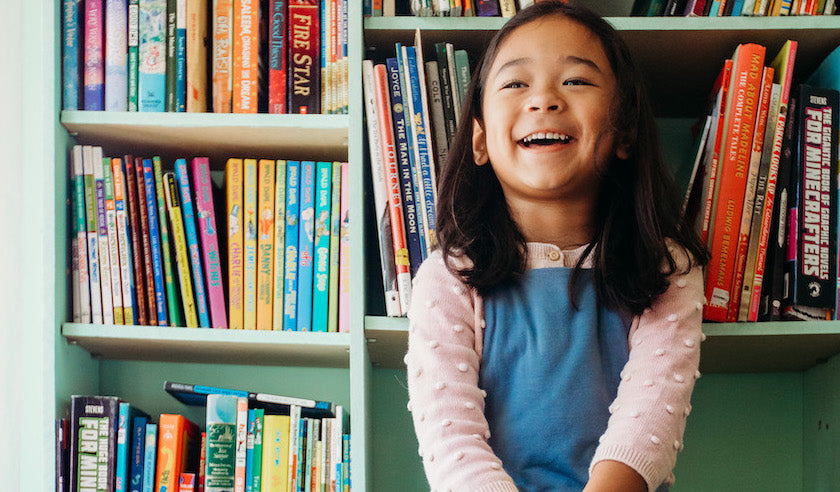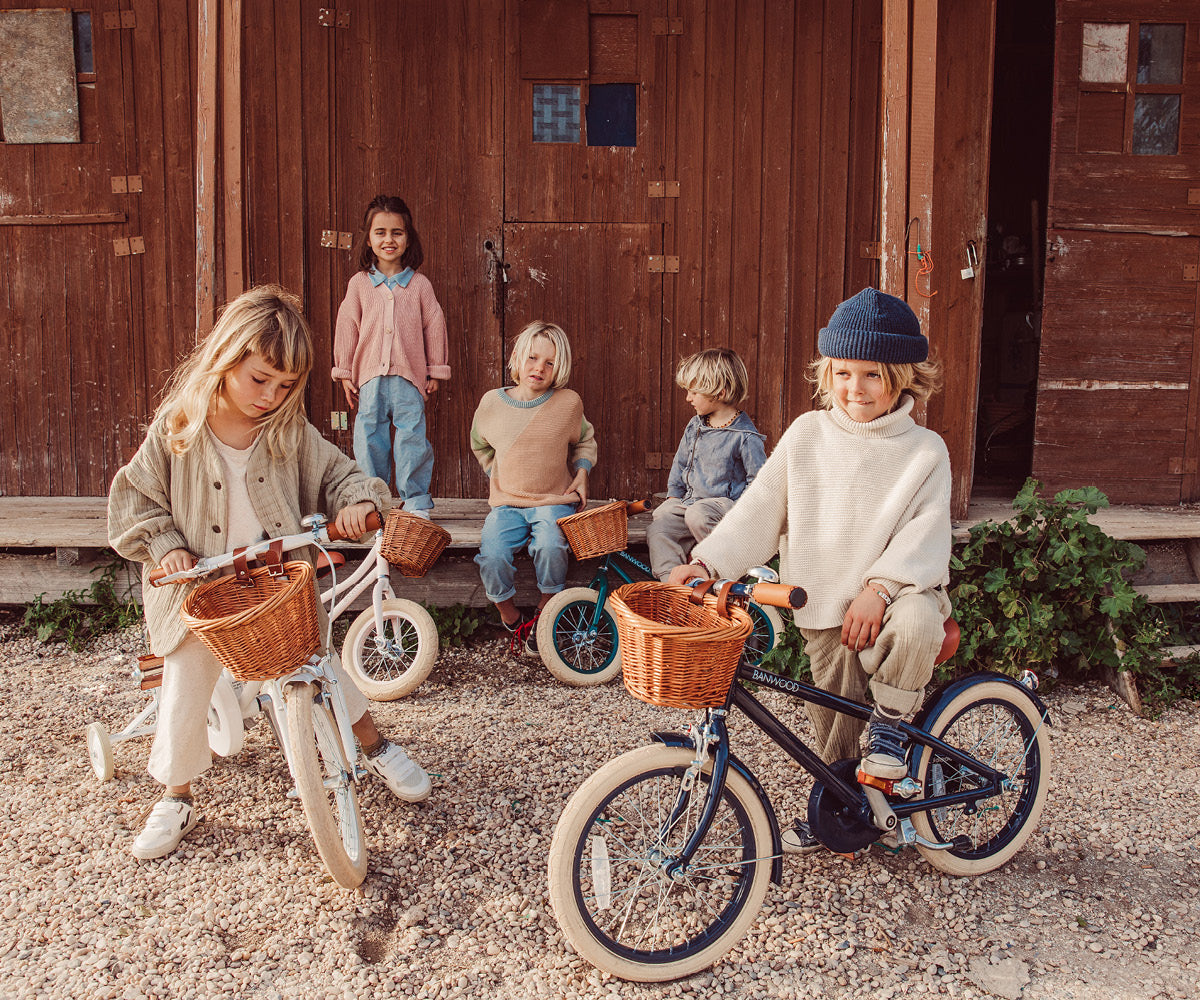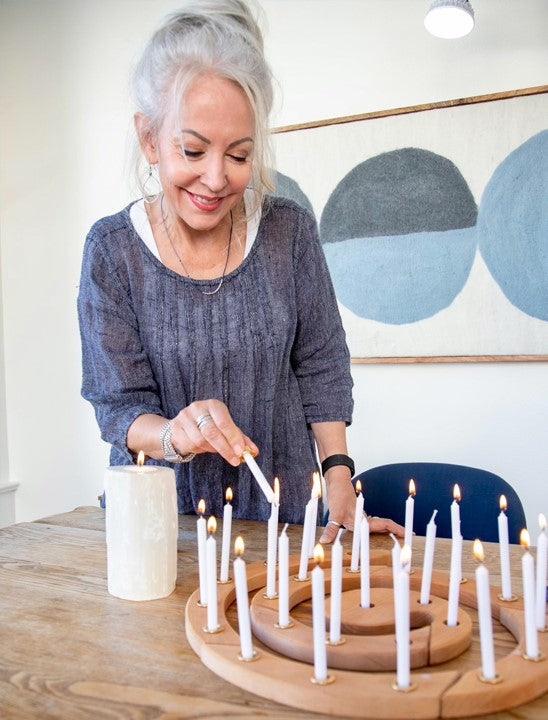“The first light of Advent is the light of the stones, the light that shines in Crystals, in seashells and in bones.
The second light of advent is the light of advent is the light of plants, plants that reach up to the sun, and in breezes, dance.
The third light of advent is the light of the beasts. It shines in the greatest and it shines in the least.
The fourth light of advent is the light of humankind,
the light of love, the light of thought, to give and understand.”
Welcome to another “Sunday with Sarah.” I'm Sarah Baldwin and today is the first Sunday of Advent. You may think that Advent is a Christian tradition, but I’m here today to share with you why I think it’s a universal season of anticipation that can be observed in a deep and meaningful way by families of all faiths.
Some of you might be wondering what Advent is. In the Christian faith, Advent begins today – the fourth Sunday before Christmas and is a season that occurs the four weeks leading up to Christmas. I think that Advent is a season that, regardless of one’s faith and beliefs, can be observed by everyone with its universal themes of anticipation, of patience, of looking inward, and of inner preparation and outer preparation. It’s a season of preparing one’s home for guests and for the holidays with anticipation. Everyone can relate to the themes of anticipation and waiting. Think of the anticipation of waiting for the birth of a baby.
At this darkest time of year in the northern hemisphere, there is anticipation of light returning after the cold days and long nights in the darkness of winter. There is anticipation for the time when the Sun and its light will be returning slowly.
You may be familiar with some of the more popular Advent traditions, like the Advent calendar. Opening a door on the Advent calendar each day for the 24 days leading up to Advent was always a favorite tradition in my family—both when I was growing up, and one that I practiced with my own children. Some advent calendars have chocolate or treasures behind each door, but many have a surprise picture to find each day. Children get a great amount of joy opening a new door each day and anticipating the final door that will be opened on Christmas Eve. There are advent calendars with Christian themes and motifs and other ones that are more seasonal or whimsical. Advent calendars are wonderful for a child who cannot yet tell time or read a calendar because it's very abstract for them to know how many days there are left before Christmas. Seeing the number of remaining doors to open gives them context.
Another tradition you may be familiar with is an Advent wreath which typically holds four candles, one for each of the four Sundays before the holiday. A new candle is lit each Sunday during advent and the same candle will be lit every day that week. Then on the next Sunday, two candles are lit and so forth, until the fourth candle is lit on the Sunday before Christmas. A variation on the Advent Wreath is a wooden Advent Spiral that has 24 holes. Instead of lighting one candle a week, one candle is lit each day from December 1 until the 24th. This gives children a visual reference for how many days are left until Christmas. Some families light one candle each night and move it one space each day through the spiral to the center. Other families will use the spiral with the wooden Mary and Joseph, made by the German toymaker Ostheimer and move the holy family through the spiral with the candle each day. You can also lay evergreen branches throughout the spiral to make it more festive.
Finally, I’d like to tell you about a lovely festival that is celebrated at this time of year by most Waldorf schools. It is sometimes called an Advent spiral, but more often now is called the “Garden of Light” or “the Winter Garden” to keep it more seasonal and remove any Christian connotations. If you haven't experienced this festival before, let me describe it for you. Ahead of time, a large spiral of evergreen branches is laid out in a spiral formation on the floor or on the ground. Now at the center of that spiral will be one large lit candle. This festival is usually performed indoors, but I've also seen it performed outdoors where you can make an even bigger spiral. The festival is usually performed in the early evening or at dusk and families enter the room quietly and are seated. It's very dark except for the one candle burning at the center of the room. There might be quiet music --it could be people singing very quietly, or a harp or other acoustic music played quietly. Then one by one the children will be invited to walk the spiral. As they enter the spiral, they're handed an apple with an unlit candle in it. The child will take the apple and make the journey, by themselves, all the way inward to the center of the spiral. There they will light their candle from that central candle and then ever so carefully carry the apple back, outward through the spiral. But along the way, they will choose a spot along the spiral on which to set down their candle and complete the journey outward. At our school, gold cardboard stars were set along the perimeter of the spiral and the child would choose a star on which to place their candle. The room, which was very dark when the festival began becomes brighter and brighter as each candle is lit and placed, until the last child has made the journey. The room is now glowing with warmth and light, all originating from the one candle burning at the center. Parents and teachers, the community and children may all sing together a song or Carol, often “Silent Night,” before everyone quietly leaves to return home.
Now you don't have to be part of a Waldorf School to participate in such a festival. I’ve know many families and homeschoolers who choose to celebrate this festival on their own. They gather family friends and children together. It can be done outdoors, as I mentioned earlier, or if you have a large room, a church, or a barn it can be done indoors. Make sure to have lots of buckets of water nearby, and make sure that children with long hair have it tied back. In the many years of witnessing this festival I've never seen a mishap, but it is always wise to be prepared and careful.
To me this festival represents a time of year with short days and long dark nights when we can all look inward to find the inner light that shines within us and bring that light out into the world with love and joy and radiate it to those around us.
We would love to hear what your family traditions are. What festivals do you celebrate this time of year and what holidays do you observe? Please share your ideas, questions and thoughts in the comments below.












Leave a comment